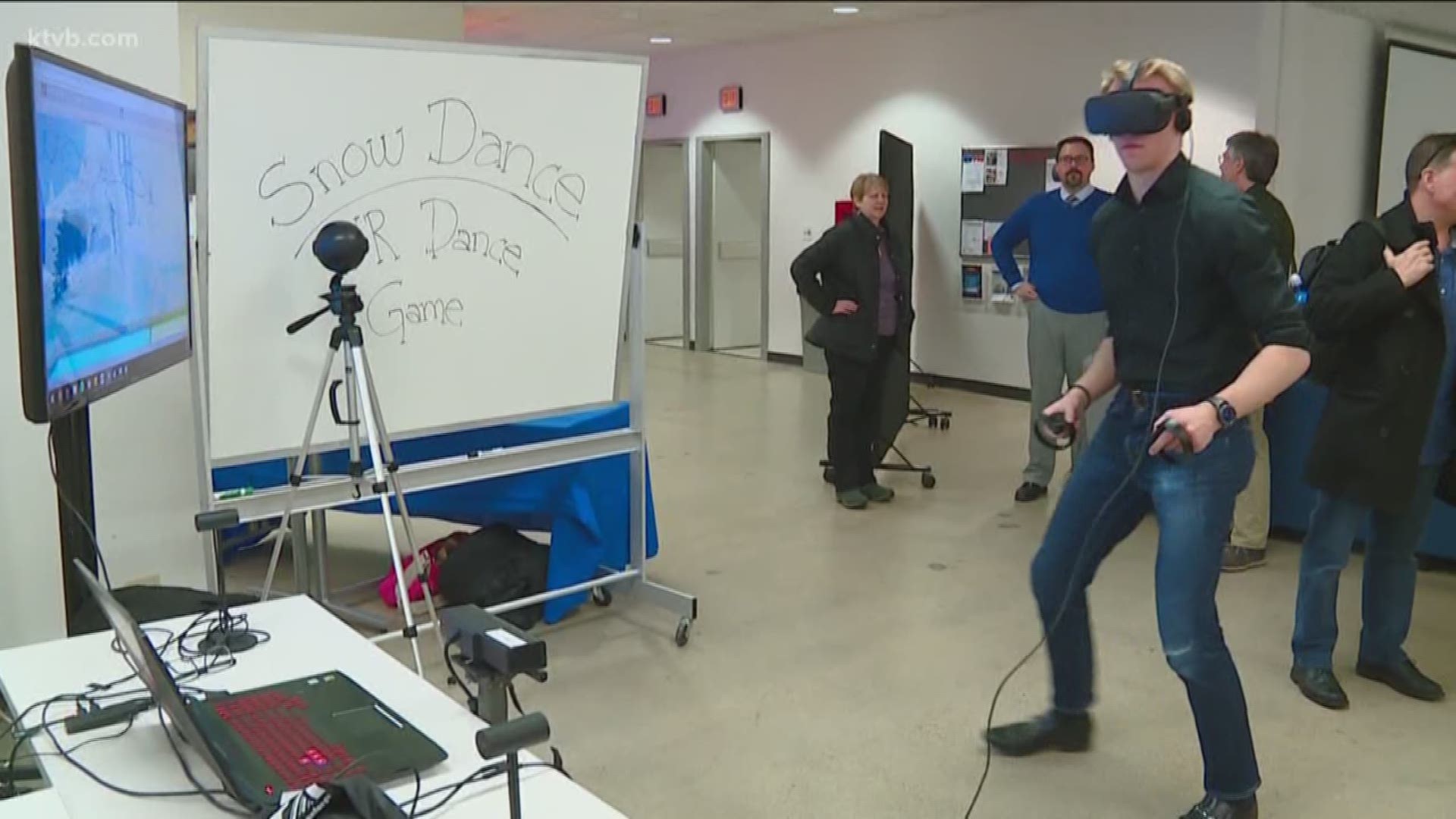BOISE, Idaho — Boise State University is partnering with a Boise foundation to bring more virtual reality experiences to the community.
Whether it’s stepping into a 3D game or working with NASA to develop the latest communication technology for astronauts, there's no limit to the students' imagination.
Virtual reality (VR) gives everyone a chance to experience a different type of environment in a virtual world. Now, Boise State's Games, Interactive Media and Mobile Technology Program is partnering with the Old Coot and Maggie Foundation to expand that technology to the community for all to experience.
RELATED: Virtual reality bash in Boise
The owner of the foundation, who goes simply by “Old Coot”, said the goal is to help society.
“We want to get large enough we can solve large problems and we want to get large enough so that we can cause social change,” he said.
One such project looking at social change aims to help address eating disorders by putting people in new perspectives.
A local artist, Becca Watkins, made a portfolio of artwork and journal entries detailing her personal experience with an eating disorder. The students turned that artwork into a virtual reality experience to give people another perspective on the issue.
“Technology and virtual reality, specifically, are incredible for generating empathy,” said Taylor Campbell, a student developer at BSU. “It’s one thing to be told a story or be shown a documentary, it’s quite another thing to put on the headset and actually experience something similar to what somebody else has experienced.”
The idea of using technology to educate about eating disorders is nothing new, but the students have taken it a step further.
“Actually, virtual reality has been used in eating disorder therapy for some time,” said Anthony Ellertson, director of games and interactive media at BSU. “But in the past, it was using things like a mirror that would change body shape. The reason we went to using virtual reality for this particular project, is we have complete control so we can have a different body on the person’s experience in the environment, we can show any number of various anxiety triggers or issues that a person can encounter in a place that’s safe.”
Other projects are also in the works for things like helping deaf students better translate sign language to written and verbal communication. There’s also a project to better understand spectrum disorders and help magnify speech and occupational therapy for autistic students.
Next September, Old Coot said there will be a larger project rolled out that includes projects focusing on dementia and Alzheimer’s.
“The really cool thing about virtual reality is its experiential learning,” said Olivia Thomas, another interactive media development student at BSU. “Instead of just reading about something or hearing about it, you can experience it in a way that might not even be possible in reality. We’ve done apps bringing it to the Sistine Chapel, we’ve done simulations to teach people how to learn skills and that’s where virtual reality really shines, I think, is bringing you into an experience you wouldn’t be able to have otherwise.”
Ellertson said virtual reality also provides a learning experience.
“Virtual reality ends up being total immersion into an environment and that really allows us to have complete control so we can have a child who has to learn about an environment or has to feel comfortable in a particular environment, we can have them experience that, and the scenario of things that can happen in that environment before they actually have to do it,” he said.
According to Ellertson, these projects, when completed, will be sent to field researchers for testing and could eventually make their way to public use.
He said the goal is to have it sent to as wide a variety of researchers as possible so that it can be adapted for a wide range of uses in various communities nationwide.
Ellertson also said that starting this fall, BSU will start offering classes through its extended studies program where the community can take classes on different social topics.
As part of the class, members would be paired with a researcher in that field of study to develop high-tech model solutions to address that particular social topic.

